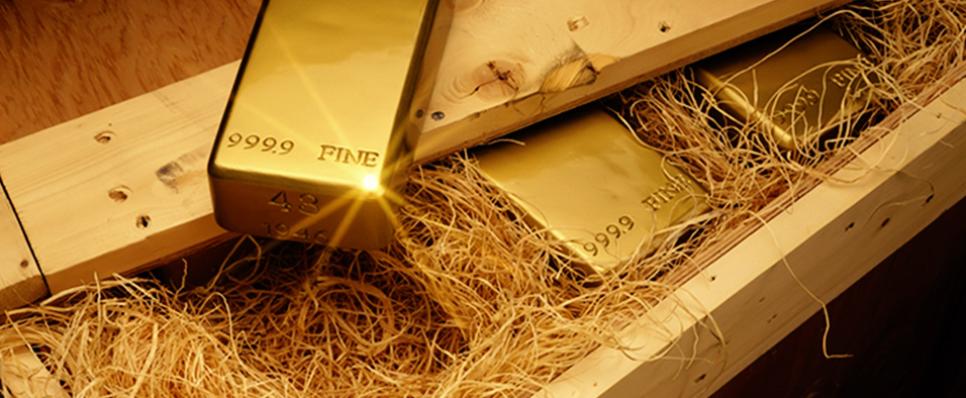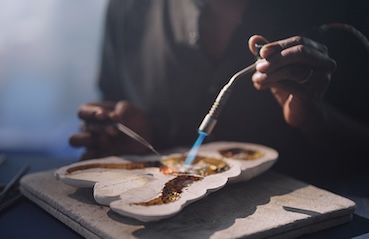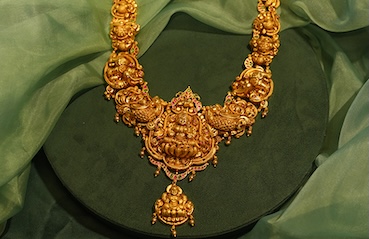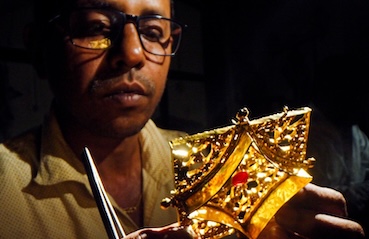Published: 15 May 2018
How is gold refined?

Did you know that more than 190,040 tonnes of gold have been mined through human history? There are a lot of different processes that gold goes through after it is mined and before it reaches us, be it as jewellery, bars, coins or any of these ways gold is used in everyday life. The first step is refining.
Why does gold need to be refined?
Gold, the most loved metal in India, does not exist in its purest form naturally. The metal is extracted from its ores, which are mined from the earth. The gold obtained after the mining process isn’t pure. It is mixed with many impurities that need to be removed, which is done through gold refinement process.
How is gold refined?
Various techniques and methodologies have been used for the refinement of gold. Let’s have a look at some:
-
Using Acid
This is the most common method to purify gold. In this method, strong acids are used as a means of dissolving impurities. Hydrochloric acid and nitric acid are the acids used in this process. When gold is added to the solution containing the acids, impurities separate from the gold. After removing the other substances, the precipitate that remains is 99.999% gold.
-
Using Fire
Another process that is used to refine gold involves the application of heat. This is the oldest method of obtaining pure gold. Gold scraps are placed in a crucible (a container that can withstand very high temperatures). This crucible is then placed in a furnace which is heated up to almost 2,000 degrees Fahrenheit. The gold melts at such a high temperature. It is then transferred to another container, leaving the impurities and other substances floating at the surface.
-
Using Electricity
Purifying gold using electricity is commonly known as the ‘Wohlwill Process’. The method got its name from Emil Wohlwill, who invented it in 1874. This requires three main components: Anode (made with Gold that needs refining), Cathode (made with 24-karat gold), and an Electrolyte solution. Once the anode and cathode are suspended in the electrolyte solution, an electric current is passed through it. This causes all gold to travel from the anode to the cathode. All the impurities get dissolved in the solution. At the end of this process, what is left is a highly pure gold cathode. The gold is then removed, melted and then arranged in the suitable form.
Related: Greatest gold treasures ever found
-
Miller Process
This process is known to purify gold to 99.95%. This method got its name from Francis Bowyer Miller, its inventor. In the Miller process, unrefined gold is first melted. Then, chlorine gas is passed through it. The gas turns other metals and impurities into a solid form, making it easy to separate them from gold. Even after this process, the gold that is obtained is 98% pure. This gold is then further purified electrolytically, thus removing platinum and palladium.
-
Cupellation
Cupellation is a process that purifies ores by separating gold and silver from base metals and other impurities. The process makes use of a cupel – a high temperature resistant flat bowl. The ore is placed in this cupel which is put in a special furnace. Hot air is then passed through it to remove the impurities. The impurities and other metals either vaporise or are oxidised or absorbed by the cupel.
-
Other Methods
- The gold that refining companies receive for purification is called ‘dor̕e form of gold’. A dor̕e bar is basically an alloy of gold and some other metals. This is re-liquified in a furnace. The gold is separated from impurities and other metals when borax and soda ash is added to the mix. And this is how pure gold is obtained.
- It is also possible to refine gold without any large-scale equipment. In this process, nitric acid is first added to the gold that needs purification. Then, Hydrochloric acid or Muriatic acid is added to the mixture. Once the mixture settles, impurities are removed by filtering the solution. Since a lot of acids were added, the remains are treated to neutralise those acids. Once all this is done, the resultant muddy precipitate is gold! This muddy substance is then rinsed thoroughly in water and treated with aqueous ammonia. White vapours form because of the treatment. After rinsing once again and allowing it to dry, refined gold is obtained.
Related: Making of gold thread
Out of the processes mentioned above, the Wohlwill Process is known to be the best technique for refining gold. The reason being that this process very successfully produces 99.99% pure gold. The cost and the time involved in this process are probably the only drawbacks.











